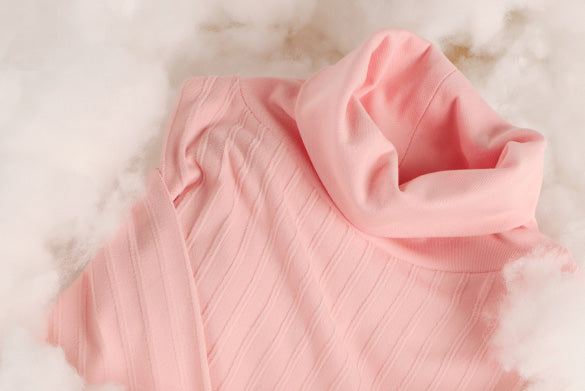In today's era, the focus on ecological sustainability has reached unprecedented importance. As consumers increasingly embrace an eco-conscious mindset, the demand for sustainable products and practices is growing. HAE, a participant in women's apparel, embodies this ethos by offering environmentally friendly garments and plastic-free packaging solutions. This article explores how HAE is contributing to sustainable fashion, particularly in the context of Plastic Free July and the broader sustainable development goals.
The Rise of Sustainable Fashion
The fashion industry has long faced scrutiny for its detrimental environmental footprint, including excessive water consumption, pollution, and waste. However, the narrative is shifting as brands like HAE champion sustainability. Sustainable fashion emphasizes crafting apparel that is both eco-friendly and ethically made. This approach entails utilizing sustainable materials, minimizing waste, and upholding fair labor practices.
HAE: The Star Chaser of Sustainable Fashion

Plastic Free July Movement
Plastic Free July is a worldwide initiative urging individuals to cut down on single-use plastics. Since its inception in 2011, it has gained significant traction, with millions of participants globally. The primary aim is to highlight the environmental damage caused by plastic pollution and to encourage enduring shifts in consumer habits.
The Environmental Impact of Plastic Packaging

Plastic packaging is a significant contributor to pollution, with millions of tons ending up in oceans and landfills each year. Traditional plastic is not biodegradable, meaning it can persist in the environment for centuries, harming wildlife and ecosystems. As consumers become more aware of these issues, the demand for plastic-free alternatives is increasing.
HAE's Plastic Free initiative

At HAE, being plastic-free is a fundamental principle we strive to uphold daily. While reaching 100% plastic-free operations is challenging, we are committed to significantly lowering our carbon footprint. From the start, our mission has been to eliminate traditional plastic from our packaging. At HAE, plastic packaging is strictly avoided. We believe that sustainable clothing must be paired with sustainable packaging. That’s why we’ve opted for PLA-based alternatives to conventional plastic. With proper disposal, these PLA-based packages break down within 180 days, leaving no environmental trace. Our mission, we’re not only reducing our environmental impact but also inspiring our customers to adopt eco-friendly habits. Together, we can make a meaningful difference for our planet.
PLA-Based Packaging: A Sustainable Alternative

PLA-based packaging is gaining recognition within the community. PLA, or polylactic acid, is a biodegradable and bioactive thermoplastic made from renewable resources like corn starch or sugarcane. Unlike traditional plastics, PLA decomposes under industrial composting conditions, making it a much more sustainable choice. By opting for PLA, we are taking a significant step toward reducing environmental impact and fostering a greener future.
Benefits of PLA-Based Packaging
The advantages of PLA-based packaging are numerous. Firstly, it reduces dependency on fossil fuels since it is made from renewable resources. Secondly, it significantly lowers greenhouse gas emissions during production compared to conventional plastics. Thirdly, its biodegradability ensures it won’t persist in the environment for hundreds of years, reducing pollution.
The Sustainable Development Goals

The United Nations' Sustainable Development Goals (SDGs) outline a roadmap for achieving a better and more sustainable future. HAE's initiatives closely align with several of these goals, including responsible consumption and production, climate action, and life below water. By championing sustainable practices, HAE contributes to global efforts to safeguard our planet.
How HAE's Practices Promote Responsible Consumption and Production
Responsible consumption and production entail using resources efficiently and minimizing waste. HAE achieves this through various strategies:
- Promote Longevity: Ensuring timeless designs and using premium fabrics to guarantee the durability of our garments.
- Ethical Manufacturing: Committing to fair wages and safe working conditions for all employees.
- Zero Waste Initiatives: Implementing practices to minimize waste throughout the production process.
- Recycling Programs: Encouraging customers to recycle their clothing and packaging.
Climate Action: Reducing Carbon Footprint with Sustainable Choices
Climate change is among the most urgent challenges of our era. HAE addresses climate action through:
- Sustainable Transport: Opting for energy-efficient shipping methods to reduce our carbon footprint.
- Educating Consumers: Raising awareness about the environmental impact of fashion and promoting sustainable choices.
- Protecting Marine Life: The Role of Plastic-Free Packaging
Protecting Marine Life:

Plastic pollution poses a severe threat to marine ecosystems. By adopting plastic-free packaging, HAE contributes to safeguarding oceans and marine wildlife. Our PLA-based packaging biodegrades without harmful residues, making a significant impact in this endeavor.
Embracing Sustainability
As sustainability gains prominence, HAE's core operations align closely with the SDGs. We demonstrate that creating beautiful, high-quality clothing can coexist with environmental responsibility. Our approach to materials and packaging underscores our commitment to sustainability.
How Consumers Can Support Sustainable Fashion

Consumers play a pivotal role in advancing sustainable fashion. Here are ways to contribute:
- Choose Sustainable Brands: Support companies prioritizing environmental and ethical practices.
- Reduce, Reuse, Recycle: Practice mindful consumption and maximize the use of clothing.
- Support Plastic-Free Initiatives: Participate in movements like Plastic Free July and advocate for plastic-free packaging.
- Educate Yourself and Others: Stay informed about sustainable fashion and share knowledge with others.
Together, we can build a more sustainable and equitable world, one garment at a time.


